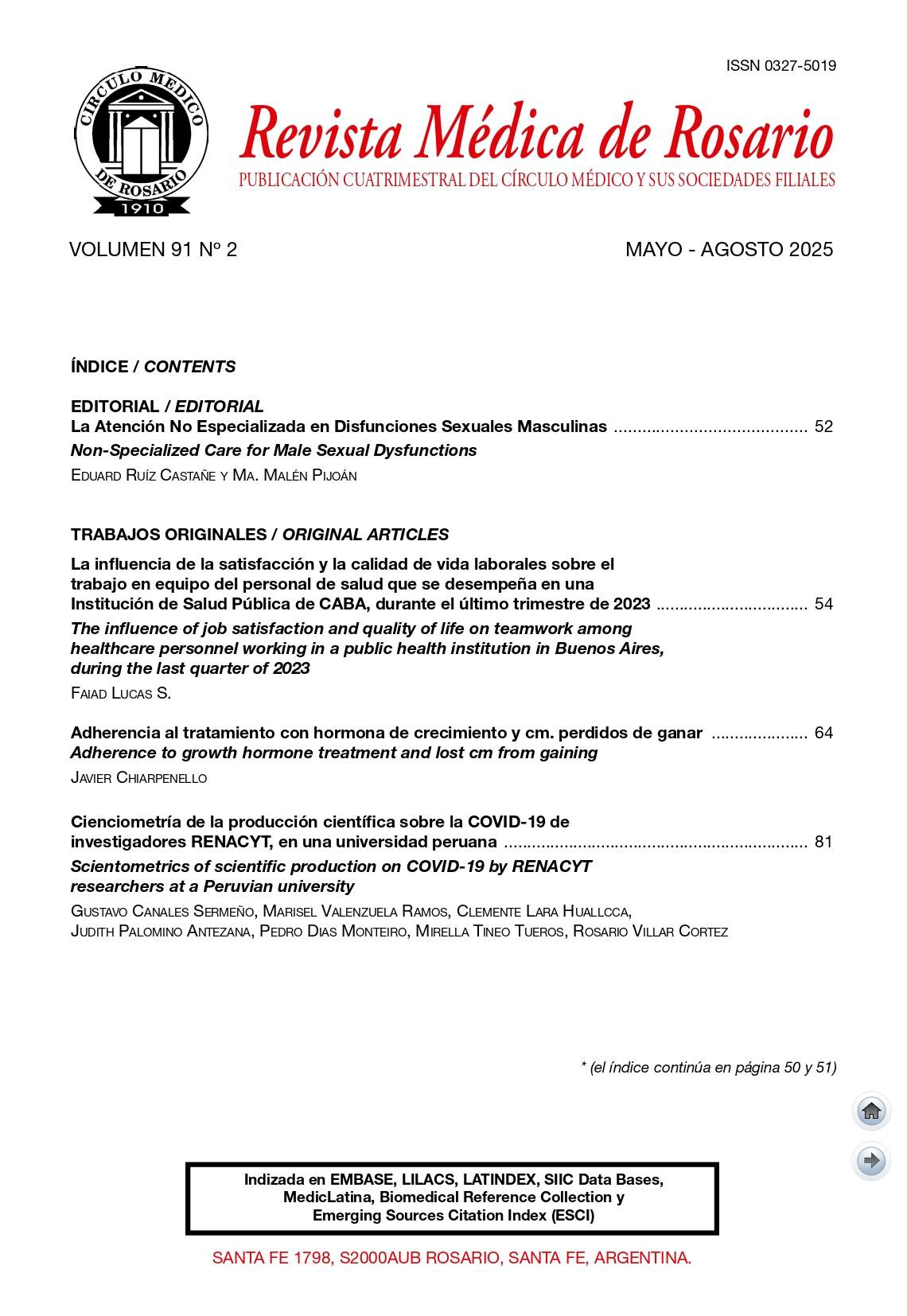ADHERENCIA AL TRATAMIENTO CON HORMONA DE CRECIMIENTO Y CM. PERDIDOS DE GANAR
ADHERENCE TO GROWTH HORMONE TREATMENT AND LOST CM FROM GAINING
Keywords:
shart stature, adherence, growth hormone, centimeters lost or gained, easypodAbstract
Objective: To evaluate adherence to growth hormone treatment in a group of patients of both sexes with one of the two diagnoses: growth hormone deficiency and intrauterine growth retardation.
Materials and Methods: Ninety-three patients were included in the study. All received treatment using the same brand of recombinant somatotropin (Saizen liquid), and adherence was assessed using data provided by the provider. All were seen by the same healthcare provider during the follow-up period. They were divided into two groups based on diagnosis.
Results: Of the total of 93 patients included in the study, 44 (47.31%) were diagnosed with growth hormone (GH) deficiency and 49 (52.69%) with intrauterine growth retardation (IUGR). The average age at the start of treatment was 8.5 years. The adherence percentage was divided into 3 groups: ≥85% (good adherence), 70-84% (medium adherence), and <70% (low adherence). 81.2% of patients had an adherence ≥85%, that is, 4 out of 5 patients. It can be observed that patients with an adherence ≥85% gained 1.87 cm/year more than those with an adherence <70%. Another analytical concept is: “the centimeters lost to gain at the end of treatment” according to the percentage of adherence they could present throughout the treatment. Finding, (if we count both sexes), a loss at the end of treatment of 11.22 cm in those who presented an adherence < 70% in relation to those who presented an adherence ≥ 85% (11.89 cm less in men and 10.53 cm less in women).
Conclusions: Treatment adherence makes a significant difference in therapeutic response. Therefore, having systems to record daily growth hormone administration makes a significant difference at the end of treatment. Informing parents about the centimeters lost or gained at the end of treatment in the event of poor adherence generates greater commitment on their part to ensure compliance with growth hormone treatment
Downloads
Published
How to Cite
Issue
Section
License
Copyright (c) 2025 Javier Chiarpenello

This work is licensed under a Creative Commons Attribution-ShareAlike 4.0 International License.
Licencia Atribución-CompartirIgual 4.0 Internacional (CC BY-SA 4.0)
https://creativecommons.org/licenses/by-sa/4.0/deed.es






